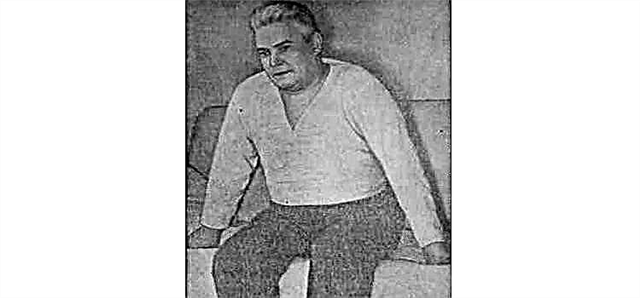Blood pressure (BP) with angina pectoris, as well as the pulse and its fluctuations, play a large role in the formation of coronary heart disease (IHD). The combination of these factors negatively impacts cardiovascular risks. In this article, we will consider what is the pressure in angina pectoris in men and women and provide you with an algorithm for correcting it.
Pressure and pulse in patients with angina pectoris: is there a relationship
 There is a strong relationship between arterial hypertension (AH) and IHD. The mechanisms of development of these pathologies are similar and have common risk factors, such as obesity, burdened heredity, unhealthy diet, low physical activity, smoking. Reorganization of pressure regulation in the presence of these factors first causes an increase in blood pressure, which leads to a change in the left ventricle and large vessels, as well as the capillary network. High blood pressure gives impetus to the development of atherosclerosis, including in the coronary arteries, which is a direct cause of angina attacks. Hypertensive crises lead to instability of the atherosclerotic plaque. In this state, the body balances on the brink of developing myocardial infarction.
There is a strong relationship between arterial hypertension (AH) and IHD. The mechanisms of development of these pathologies are similar and have common risk factors, such as obesity, burdened heredity, unhealthy diet, low physical activity, smoking. Reorganization of pressure regulation in the presence of these factors first causes an increase in blood pressure, which leads to a change in the left ventricle and large vessels, as well as the capillary network. High blood pressure gives impetus to the development of atherosclerosis, including in the coronary arteries, which is a direct cause of angina attacks. Hypertensive crises lead to instability of the atherosclerotic plaque. In this state, the body balances on the brink of developing myocardial infarction.
With the progression of the deposition of protein-fat masses in the vascular wall, the arteries become stiff and cannot provide pressure regulation, which can cause hypotension.
Features in women
Despite the fact that ischemic heart disease is considered a "male disease", women are equally susceptible to this pathology. The insidiousness of ischemia in them is that it does not always show classic symptoms.
Most often, women are worried about:
- Pain and discomfort in the shoulder, back, abdomen;
- Dyspnea;
- Nausea and vomiting;
- Sweating;
- Dizziness and weakness
As a rule, there is no pain in the region of the heart, therefore, the patient's complaints are attributed to neurosis, menopause, and pathology related to the digestive and nervous systems. This misses the important point of ischemia, at which myocardial infarction can occur.
Pressure for angina pectoris in women is often in the range of hypotension. Low blood pressure, according to the latest data, negatively affects the prognosis and course of coronary artery disease.
Correction of blood pressure
Hypertension with angina
The main goal of treating angina pectoris with high blood pressure is to reduce the risk of death from myocardial infarction, stroke and renal failure.
Medicines for angina pectoris are also used for hypertension. The drugs cannot completely cure coronary heart disease, but they can reduce the frequency and intensity of attacks to a minimum. Also, when taken correctly (long-term and regular), they lower blood pressure readings to a safe level. Thus, the quality and duration of life, working capacity and general psychophysical state, emotional background are significantly improved. The person feels less sick.
Medicines with proven efficacy in treatment
| Acetylsalicylic acid | This is the usual 75-100 mg aspirin. The brand name often includes the prefix "cardio". Resists thrombosis. |
| Beta blocker | Blocks the action of adrenaline on receptors. Reduces the heart's need for oxygen during exercise, which has a positive effect in the treatment of angina pectoris. Reduces systolic and diastolic blood pressure. |
| ACE inhibitors | Suitable for those with diabetes mellitus, preventing the development of nephropathy. Reduces left ventricular hypertrophy. |
| Nitroglycerine | Nitric oxide, which is released from the drug in the vascular wall, dilates the coronary arteries during myocardial ischemia, which ensures the restoration of blood circulation in the muscle area. |
| Calcium antagonists | Prescribed when beta-blockers are contraindicated (heart failure, blockages of the conducting system, bronchial asthma) |
| Lipid-lowering therapy | Statins, fibrates and bile acid sequestrants - drugs that normalize cholesterol and lipoprotein levels |
You should not completely rely on drugs, because without lifestyle changes, they partially lose their effectiveness.
Hypotension with angina pectoris
Until recently, it was believed that low blood pressure is better than high. However, the statistical analysis carried out suggests that systolic blood pressure of 110 and below, and diastolic blood pressure of 60 and below are a risk factor for the development of MI no less than hypertension.
Hypotension is characteristic of women of reproductive age, as well as patients with severe atherosclerosis. Low blood pressure occurs in patients who mistakenly take high doses of antihypertensive drugs.
As a rule, a person feels that the pressure is low - dizziness, staggering, fatigue appear. Yes, at the moment, the optimal method for correcting this condition is normal physical activity, the use of caffeine-containing products in moderation and wearing compression hosiery.
Treatment of angina attacks with hypotension is a difficult task, since most drugs prescribed for this disease have a pressure-lowering effect.
How does the pulse behave in such patients and what to do about it?
 Not only pressure, but also the pulse with angina pectoris matters. An increase in heart rate (HR) above 70 beats per minute indicates that the heart is working hard. This means that the oxygen demand of the muscle increases. In addition, since the coronary arteries receive blood during relaxation (diastole) when the heart rate rises, the duration of their filling is shortened. In such conditions, chronic ischemia occurs, which leads to degeneration of the muscle fibers of the heart.
Not only pressure, but also the pulse with angina pectoris matters. An increase in heart rate (HR) above 70 beats per minute indicates that the heart is working hard. This means that the oxygen demand of the muscle increases. In addition, since the coronary arteries receive blood during relaxation (diastole) when the heart rate rises, the duration of their filling is shortened. In such conditions, chronic ischemia occurs, which leads to degeneration of the muscle fibers of the heart.
If the heartbeat increases sharply during physical and emotional stress, for example, when you are corny catching up with a minibus, the demand for oxygen increases rapidly. If, against this background, an attack of angina pectoris occurs with spasm of the coronary vessels, ischemia can have serious consequences.
Beta blockers are the drug of choice for patients with high heart rates. They are included in the treatment regimens for arterial hypertension.
Conclusions
Both high and low blood pressure in angina pectoris is a risk factor for the development of unwanted cardiovascular events such as myocardial infarction and stroke.
Timely drug correction of hypertension and maintaining pressure at the same level improve the patient's well-being, performance and prognosis.



